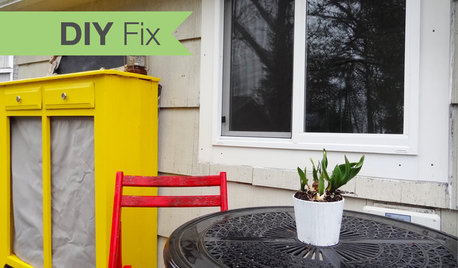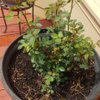Replacing a very old Granada
jenn
13 years ago
Related Stories

FURNITUREOld Furniture: Clean, Reupholster or Replace It?
A veteran upholstery cleaner weighs in on the options for found, inherited and thrift store furniture
Full Story
DIY PROJECTSHow to Replace Your Kitchen Faucet
Swap out an old faucet to give your kitchen a new look — it's a DIY project even a beginner can do
Full Story
MOST POPULARKitchen Evolution: Work Zones Replace the Triangle
Want maximum efficiency in your kitchen? Consider forgoing the old-fashioned triangle in favor of task-specific zones
Full Story
Replace Your Windows and Save Money — a How-to Guide
Reduce drafts to lower heating bills by swapping out old panes for new, in this DIY project for handy homeowners
Full Story
DECORATING GUIDESLose It: How to Reuse, Recycle or Replace Your Sofa
Follow these tips and tricks to keep your worn-out couch from ending up in a landfill
Full Story
REMODELING GUIDESReplace vs. Restore: The Great Window Debate
Deciding what to do with windows in disrepair isn't easy. This insight on the pros and cons of window replacement or restoration can help
Full Story
MOST POPULARHow to Reface Your Old Kitchen Cabinets
Find out what’s involved in updating your cabinets by refinishing or replacing doors and drawers
Full Story
KITCHEN DESIGNKitchen of the Week: Modern Comforts in an Old-Time Home
Real appliances and artful storage replace a hot plate and sparse cabinets in a San Francisco Victorian
Full Story
GREAT HOME PROJECTSHow to Replace or Revamp Your Garage Doors
Boost curb appeal and maybe even security with new garage doors. Find out cost ranges and other important details here
Full Story
GREAT HOME PROJECTSHow to Replace Your Lawn With a Garden
New project for a new year: Lose the turfgrass for energy savings, wildlife friendliness and lower maintenance
Full Story






kstrong
jennOriginal Author
Related Professionals
Brentwood Landscape Architects & Landscape Designers · Leawood Landscape Architects & Landscape Designers · Simi Valley Landscape Architects & Landscape Designers · Taylorsville Landscape Architects & Landscape Designers · Brookfield Landscape Contractors · Deer Park Landscape Contractors · Hoffman Estates Landscape Contractors · Laguna Hills Landscape Contractors · Lemont Landscape Contractors · North Plainfield Landscape Contractors · North Ridgeville Landscape Contractors · Reedley Landscape Contractors · Washington Landscape Contractors · Camp Springs Landscape Contractors · Shenandoah Landscape Contractorskstrong
jennOriginal Author
jennOriginal Author
jaxondel
kstrong
jennOriginal Author
ronda_in_carolina
jennOriginal Author
saldut
kstrong
mgleason56
kstrong
jennOriginal Author
monarda_gw
jennOriginal Author